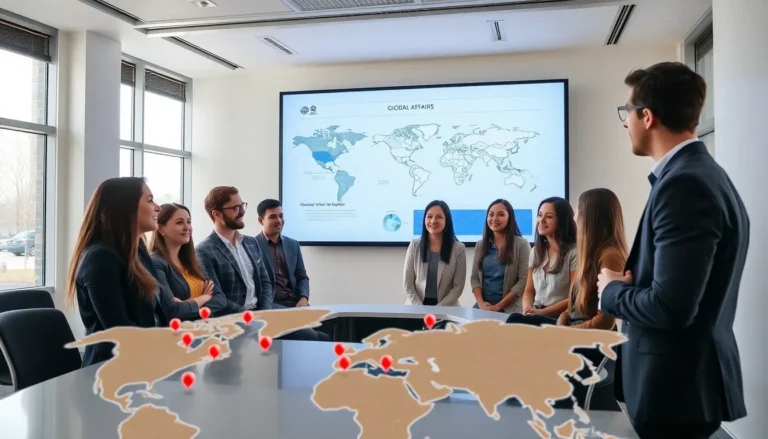Have you ever tried learning a new language and felt like you were speaking a secret code? Enter Computer Assisted Language Learning (CALL), the digital superhero swooping in to save learners from the complexities of language acquisition. It’s like having a personal tutor, a motivational coach, and a language exchange partner, all wrapped in one sleek software package. This article delves into the intriguing realm of CALL, exploring its evolution, benefits, challenges, and future possibilities that will have you saying, ‘Viva la revolución del aprendizaje.’
Table of Contents
ToggleOverview of Computer Assisted Language Learning

Computer Assisted Language Learning (CALL) refers to the use of technology to aid in the process of learning a new language. From the early days of language learning software to today’s sophisticated applications, CALL has evolved tremendously.
History and Evolution
The roots of CALL go back to the 1960s, when the first language learning programs began to emerge. Initially, these were standalone programs run on large computers, a far cry from the mobile apps available today. The 1980s saw a boom in personal computing, making language software more accessible. Fast forward to the 21st century, and now we have interactive online platforms and mobile apps that enhance the learning experience, providing instant feedback, gamification, and immersive learning environments.
Current Trends in Technology
Today’s trends in CALL include a focus on mobile learning, where students can access language courses on their smartphones or tablets. Online platforms integrate multimedia such as videos, podcasts, and social collaboration features, enabling learners to practice language skills in real-world contexts. Also, the use of data analytics helps personalize learning paths, letting educators tailor experiences to individual needs.
Benefits of Computer Assisted Language Learning
CALL offers numerous advantages that make it a preferred choice for language learners.
Enhanced Engagement and Motivation
One significant benefit is the enhanced engagement CALL provides. Gamified practices and interactive lessons create a fun learning atmosphere, keeping learners hooked. By integrating quizzes, leaderboards, and rewards, learners remain motivated to advance through levels, often without even realizing how much progress they’re making.
Personalized Learning Experiences
Another key advantage of CALL is the opportunity for personalized learning. Traditional classroom settings may not effectively cater to individual needs, but CALL platforms allow learners to progress at their own pace. Adaptive learning technologies analyze each student’s performance and adjust the difficulty level, ensuring an optimal learning curve tailored to individual competencies. This tailored approach significantly boosts retention and mastery.
Challenges in Implementing CALL
While CALL has revolutionized language learning, it’s not without its challenges.
Technical Barriers
Technical barriers can be significant, particularly in regions with limited internet access or outdated hardware. Not every student has a personal computer or reliable internet connection. Schools and educational institutions must address these disparities to ensure equitable access to CALL resources.
Pedagogical Considerations
Also, there are pedagogical considerations to keep in mind. Teachers must be trained not only to use these technologies but also to integrate them into their teaching practices effectively. Without proper training and understanding of how to blend CALL with traditional methodologies, the effectiveness of these tools can diminish.
Future Directions of CALL
Looking ahead, the future of CALL is incredibly promising, especially with the integration of emerging technologies.
Integration with Artificial Intelligence
Artificial intelligence (AI) is set to play a pivotal role in the next generation of CALL. AI can analyze user interactions and provide more responsive and realistic language practice scenarios. Imagine conversing with a chatbot that understands context, nuances, and even your local dialects, helping to bridge the gap between textbook learning and practical application.
Emerging Tools and Resources
Also, the rise of virtual reality (VR) and augmented reality (AR) tools provide immersive experiences that transform language learning. These tools allow learners to practice in simulated environments, interact with native speakers, and immerse themselves in target languages and cultures like never before. With ongoing advancements, tools available for language learners will only grow in complexity and capability.




